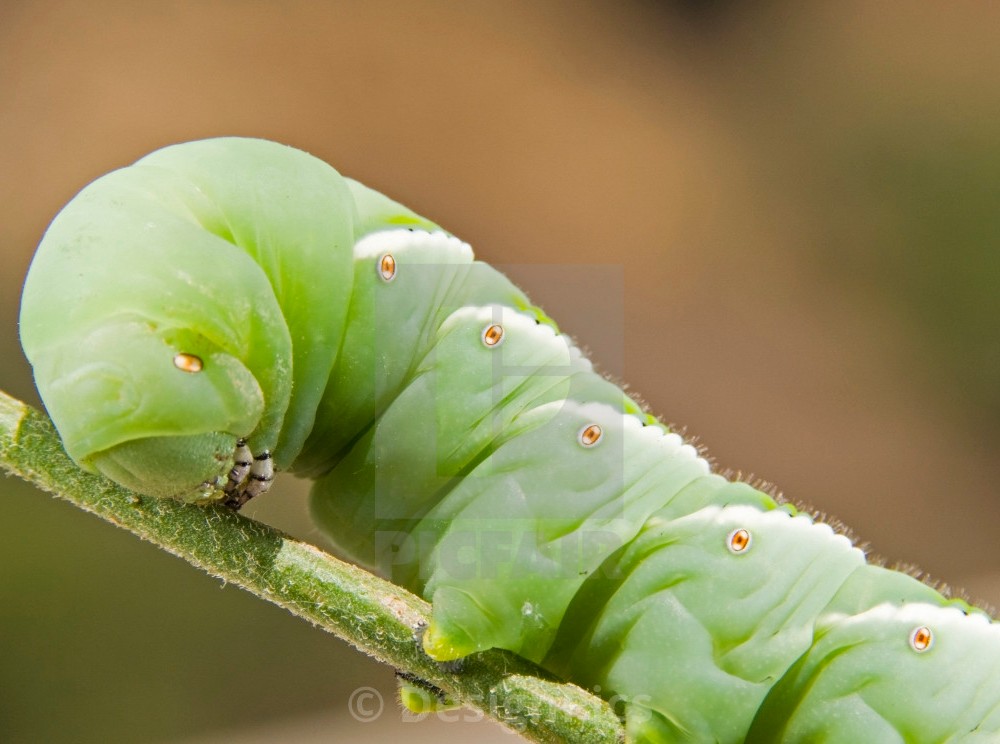Tobacco hornworm
(Manduca sexta)

Description
Manduca sexta is a moth of the family Sphingidae present through much of the Americas. The species was first described by Carl Linnaeus in his 1763 Centuria Insectorum. Commonly known as the Carolina sphinx moth and the tobacco hawk moth (as adults) and the tobacco hornworm and the goliath worm (as larvae), it is closely related to and often confused with the very similar tomato hornworm (Manduca quinquemaculata); the larvae of both feed on the foliage of various plants of the family Solanaceae. The tobacco hornworm is sometimes kept as a pet by children throughout its range. The larvae of these species can be distinguished by their lateral markings: Tomato hornworms have eight V-shaped white markings with no borders; tobacco hornworms have seven white diagonal lines with a black border. Additionally, tobacco hornworms have red horns, while tomato hornworms have dark blue or black horns. A mnemonic to remember the markings is tobacco hornworms have straight white lines like cigarettes, while tomato hornworms have V-shaped markings (as in "vine-ripened" tomatoes). M. sexta has mechanisms for selectively sequestering and secreting the neurotoxin nicotine present in tobacco. M. sexta is a common model organism, especially in neurobiology, due to its easily accessible nervous system and short life cycle. It is used in a variety of biomedical and biological scientific experiments. It can be easily raised on a wheat-germ-based diet. The larva is large, and thus it is relatively easy to dissect it and isolate its organs.
Taxonomic tree:







